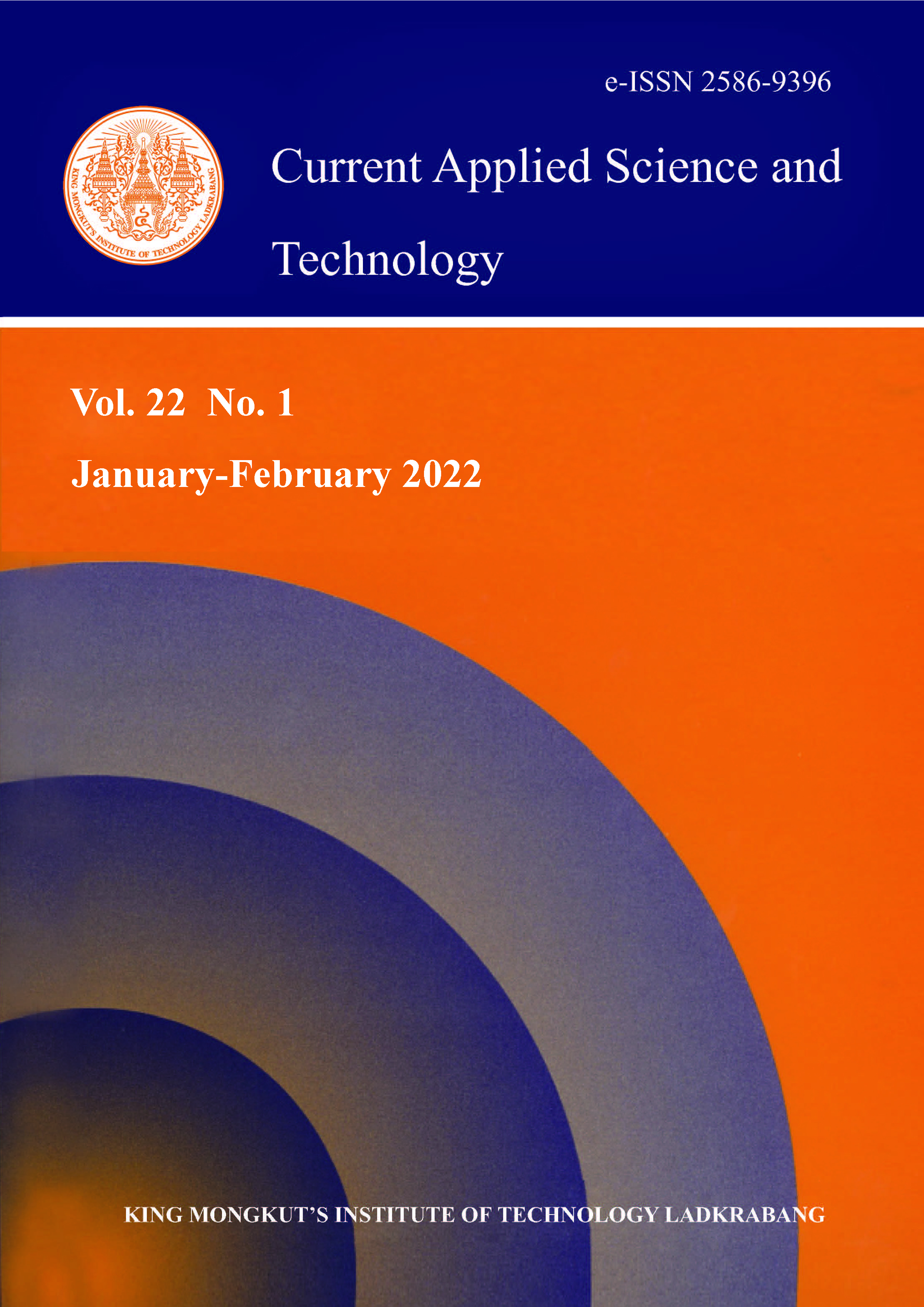Energy Optimization Algorithm for Path Selection in Wireless Body Sensor Networks
Main Article Content
Abstract
Recent advancement in technologies for wireless sensor networks has led to the emergence of wireless body sensor networks (WBSN). These networks are composed of various sensor nodes that are placed on the human body and have the ability to constantly detect, process and transmit any sensed vital signs of patients to physicians without confining the patients to their hospital beds or restraining their movement. In common with a good number of other sensor network applications, the sensors are constrained by not having sufficient energy for them to function, a situation which often leads to unexpected failures in the network. However, recent research has shown that the use of mobile nodes for data transfer can significantly reduce energy consumption of the network. Hence, in this paper, an energy efficient hybrid algorithm using particle swarm optimization (PSO) algorithm and teaching-learning-based optimization (TLBO) algorithm is presented. The proposed algorithm takes into consideration the residual energy and the distance of each node from the base station to select routes from the sensing nodes to the base station. The hybridization is performed by the incorporation of the teaching and learning factors of TLBO algorithm into the velocity equation of PSO algorithm in order to improve the convergence of the algorithm into global optimum. The performance of the new hybrid algorithm is compared to similar optimization algorithms. Extensive simulation results show the potential of the proposed algorithm to optimize the energy of wireless body sensor networks
Keywords: wireless networks; body sensors; mobile nodes; algorithm; optimization
*Corresponding author: Tel.: (+234) 8033836990
E-mail: bolaji.omodunbi@fuoye.edu.ng
Article Details
Copyright Transfer Statement
The copyright of this article is transferred to Current Applied Science and Technology journal with effect if and when the article is accepted for publication. The copyright transfer covers the exclusive right to reproduce and distribute the article, including reprints, translations, photographic reproductions, electronic form (offline, online) or any other reproductions of similar nature.
The author warrants that this contribution is original and that he/she has full power to make this grant. The author signs for and accepts responsibility for releasing this material on behalf of any and all co-authors.
Here is the link for download: Copyright transfer form.pdf
References
Jurik, A.D. and Weaver, A.C., 2009. Body sensors: Wireless access to physiological data. IEEE Software, 26(1), 71-73,
Ko, J.G., Lu, C., Srivastva, M.B., Stankovic, J.A., Terzis, A. and Welsh, M., 2010. Wireless sensor network for healthcare. Proceedings of the IEEE, 98(11), 1947-1960, https://doi.org/10.1109/jproc.2010.2065210.
Lai, D.T.H., Palaniswami, M. and Begg, R., 2012. Healthcare Sensor Networks Challenges Toward Practical Implementation. New York: CRC Press.
Das, T., Mohan, P., Padmanabhan, V.N., Ramjee, R. and Sharma, A., 2010. PRISM: Platform for remote sensing using mobile smartphones. Proceedings of the 8th International Conference on Mobile Systems, Applications, and Services, https://doi.org/10.1145/1814433.1814442.
Omodunbi, B.A., Esan, A.O, Olaniyan, O.M., Adeyanju, I.A., Raheem, W., Okoli, G.C. and Badmus, T.A., 2018. Wireless sensor network-based health monitoring system for hypertensive in-patients. FUOYE Journal of Engineering and Technology, 3(2), https://doi.org/10.46792/fuoyejet.v3i2.255.
Gurjar, D., Alam, M.I., Tiwari, B. and Pandey, G.N., 2012. Wireless sensor network: An emerging entrant in healthcare. IOSR Journal of Computer Engineering, 4(4), 43-48.
Omodunbi, B., Arulogun, O.T. and Emuoyibofarhe, J.O., 2013. A review of energy conservation in wireless sensors networks. Network and Complex Systems, 3, 17-23.
Raghunathan, V., Schurghers, C., Park, S. and Srivastava, M., 2002. Energy-aware wireless microsensor networks. IEEE Signal Processing Magazine, 19(2), 40-50.
Shah, R.C., Roy, S., Jain, S. and Brunette, W., 2003. Data MULEs: Modelling a three-tier architecture for sparse sensor networks. Proceedings of the First IEEE International Workshop on Sensor Network Protocols and Applications, 2003, pp. 30-41.
Shanmugam, D.B., Anitha, G., Kumar, K.V., Karthi, C. and Hema, M., 2012. A design approach for data collection in wireless sensor networks with a mobile base station. International Journal, 2 (12), 194-198.
Rao R.V., Savsani V.J., and Vakharia D.P., (2012): Teaching–learning-based optimization: an optimization method for continuous non-linear large-scale problems. In Information Science, 183, 1-15
Bayilmis, C. and Younis, M., 2010. Energy-aware gateway selection for increasing the lifetime of wireless body area sensor networks. Journal of Medical Systems, 36(3), 1593-1601.
Reusens, E., Joseph, W., Latre, B., Braem, B., Vermeeren, G., Tanghe, E., Martens, L., Moerman, I. and Blondia, C., 2009. Characterization of on-body communication channel and energy efficient topology design for wireless body area networks. IEEE Transactions on Information Technology in Biomedicine, 13(6), 933-945.
Braem, B., latre, B., Moerman, I., Blondia, C., Reusens, E., Joseph, W., Martens, L. and Demeester, P., 2007. The need for cooperation and relaying in short-range high path loss sensor networks. Proceedings of the IEEE International Conference on Sensor Technologies and Applications, Valencia, Spain, October 2007, pp. 566-571.
Omeni, O., Wong, A., Burdett, A.J. and Toumazou, C., 2008. Energy efficient medium access protocol for wireless medical body area sensor networks. IEEE Transactions in Biomedical Circuits Systems, 2(4), 251-259.
Ayatollahitafti, V., Ngadi, M.A., Sharif, J.B.M. and Abdullahi, M., 2016. An efficient next hop selection algorithm for multi-hop body area networks. PLoS ONE, 11(1), e0146464, https://doi.org/10.1371/journal.pone.0146464.
Nadeem, Q., 2013. A New Energy Efficient Protocol for Wireless Body Area Networks. M.S. Comsats Institute of Information Technology, Islamabad, Pakistan.
Khan, A.W., Abdullah, A.H., Anisi, M.H. and Bangash, J.I., 2014. A comprehensive study of data collection schemes using mobile sinks in wireless sensor networks. Sensors, 14(2), 2510-2548.
Kumari, J. and Chaudhary, P., 2015. An energy efficient routing algorithm for wireless body area network. International Journal of Microwave and Wireless Technologies, 5(5), 56-62.
Singh, M.R., Laishram, R., Thingbaijam, G., Oinam, Z. and Gangme, P., 2019. Development of efficient multi-hop protocols for wireless body area network (WBAN). International Journal of Innovative Technology and Exploring Engineering, 8(6c), 103-108.
Rault, T., Bouabdallah, A., Challal, Y. and Marin, F. 2014. Energy-efficient architecture for wearable sensor networks. 2014 IFIP Wireless Days, https://doi.org/10.1109/wd.2014.7020803.
Heinzelman, W.R., Chandrakasan, A. and Balakrishnan, H., 2000. Energy-efficient communication protocol for wireless microsensor networks. Proceedings of the 33rd Annual Hawaii International Conference on System Sciences, January 4-7, 2000, Hawaii, USA, doi: 10.1109/HICSS.2000.926982.






